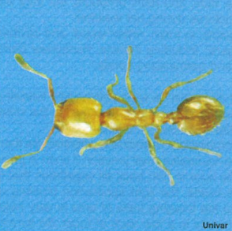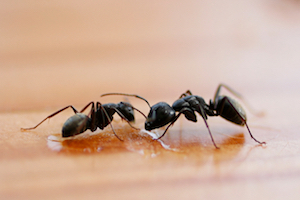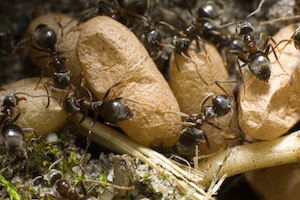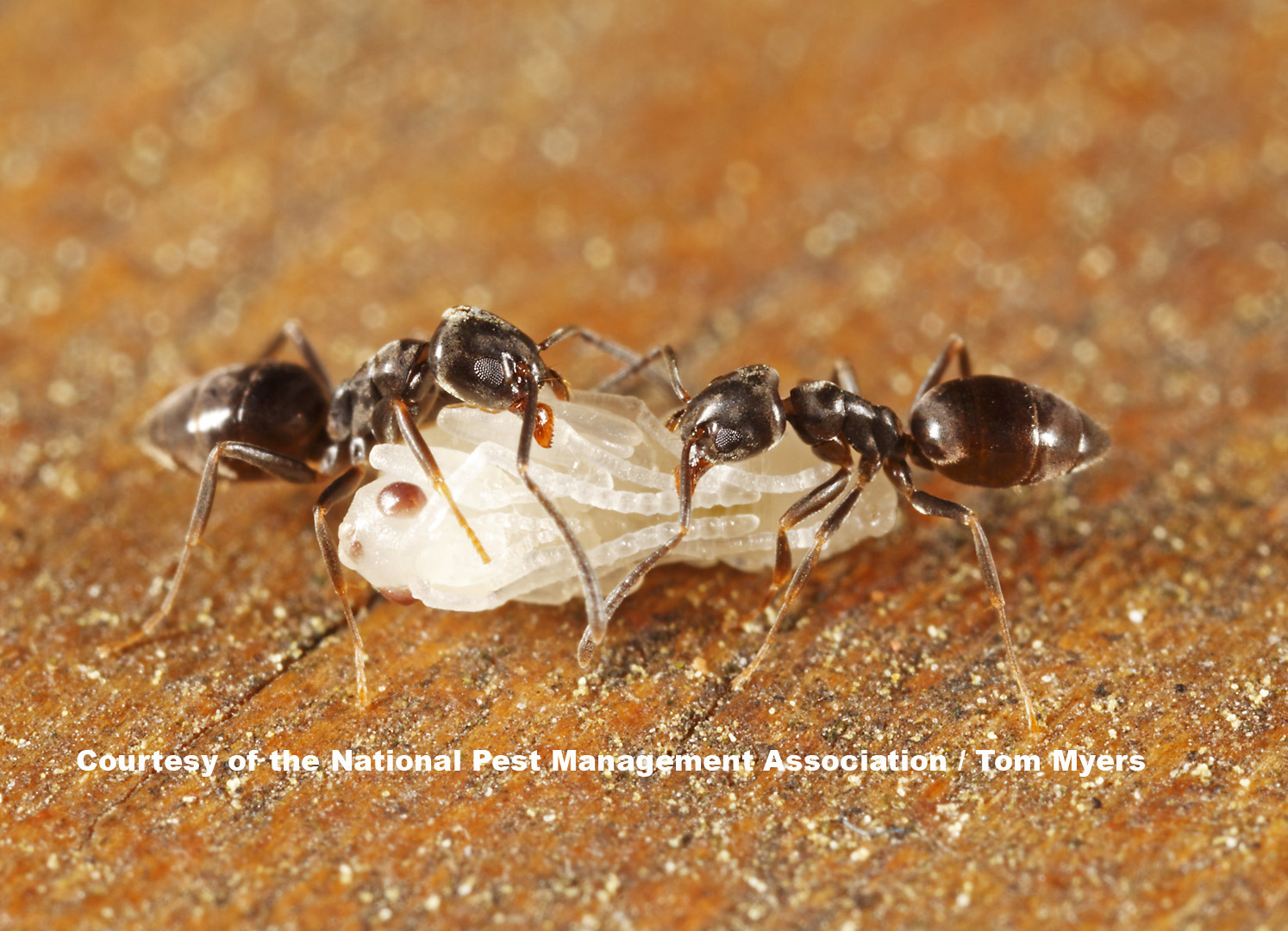Thief Ants Solenopsis molesta

Thief Ant Identification
Color: Pale yellowish to light or dark brown
Size: 1.5 mm - 2.2 mm long – one of the smallest household ant species
Legs: Six
Antennae: Yes
Shape: Unevenly rounded, thorax lacks spines
Region: Throughout most of the United States
What are thief ants?
Thief ants are one of the smallest household ants. Thief ants get their name from their habit of nesting very close to, or even sometimes within, other ants’ nests, which they then rob of food and brood (larvae and pupae). Colonies tend to be smaller than those of other ant species but can contain many queens and several thousand workers. Thief ants are often confused with pharaoh ants, although they differ in characteristics. These insects are also referred to as “grease ants” or “sugar ants” because of their affinity for greasy foods and sweet treats. This ant species can be found throughout most of the Eastern United States. See below for information on thief ant control and how to get rid of thief ants.
What do thief ants look like?
Thief ants are very small, typically only 1.5 mm to 2.2 mm long, with pale yellowish to light or dark brown colored bodies. Their thorax lacks spines and their bodies are unevenly rounded, their waste comprised of two nodes (round knobs).
Thief ants do not bite, though they do each have a stinger. However, their stingers are so small that they are rarely used effectively.
Thief ants can gain entry via household cracks, holes and open doors. Once inside, thief ants nest in small crevices, woodwork and masonry around the home, using the wires in wall voids to travel from room to room. They commonly enter structures during hot weather in search of water and greasy, protein-rich food, such as nuts, breads, meats, fruits, animal fats, oils and dairy products.
Outside, they nest in exposed soil or under objects, in trash, rotten wood and cavities in trees. They will also feed on almost anything organic including insects, mealybugs, dead insects, seeds, and germinating seeds.
Thief ant mating swarms (nuptial flights) begin in late July and end in early fall. Colonies are composed of a few hundred to several thousand workers and many queens. Queen thief ants lay eggs, which then take about 50 days to a few months to develop into adults.
Thief ants can pose a threat. Control of these pests is important, as they may carry pathogens to human food after feeding on dead rats and mice.
Because of their small size, they can make their way into packaged foods and are hard to remove without professional help.
Although thief ants are very small, their infestations are noticeable. Homeowners may be able to see a trail of thief ants in their home if they have an infestation. This species is also known to leave trails from a food source to their nest. They may also come across the small ants in their food or cooking ingredients. Once they get inside, these intruders are commonly found foraging for food in kitchens, nesting in small spaces like cabinet voids and wall crevices, as well as behind baseboards and underneath countertops.
Nest location is critical in the prevention of thief ants; however, they are often difficult to locate. The best method of thief ant control is to consider working with a licensed pest professional to employ a preventative pest management plan, but there are some preventative measures homeowners can take to stop the problem before it occurs.
To prevent thief ants, it’s important to eliminate all access to food and water sources, so cleaning up crumbs and fixing any utilities that may be causing a leak are key. Homeowners should also inspect the home for, and seal up, cracks and crevices, which are easy for ants to crawl into and gain entry to the home.
If a homeowner notices an infestation in the house, it’s best for them to call a pest control professional for help getting rid of thief ants.




